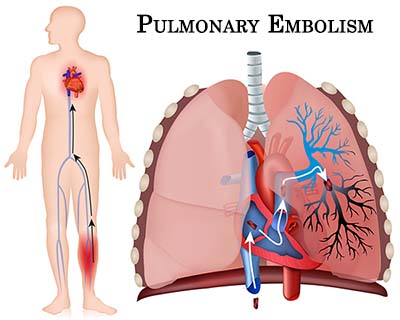- Home
- Editorial
- News
- Practice Guidelines
- Anesthesiology Guidelines
- Cancer Guidelines
- Cardiac Sciences Guidelines
- Critical Care Guidelines
- Dentistry Guidelines
- Dermatology Guidelines
- Diabetes and Endo Guidelines
- Diagnostics Guidelines
- ENT Guidelines
- Featured Practice Guidelines
- Gastroenterology Guidelines
- Geriatrics Guidelines
- Medicine Guidelines
- Nephrology Guidelines
- Neurosciences Guidelines
- Obs and Gynae Guidelines
- Ophthalmology Guidelines
- Orthopaedics Guidelines
- Paediatrics Guidelines
- Psychiatry Guidelines
- Pulmonology Guidelines
- Radiology Guidelines
- Surgery Guidelines
- Urology Guidelines
Diagnosing Pulmonary Embolism: Lung Ultrasound outperforms Wells score

A pretest risk stratification enhanced by ultrasound of lung and venous performs better than Wells score in the early diagnostic process of pulmonary embolism (PE). That is the main finding of a study to be published in the issue of Academic Emergency Medicine (AEM), a journal of the Society for Academic Emergency Medicine.
The study, by Nazerian, et al, suggests that transthoracic lung ultrasound can show alternative diagnoses such as pneumonia or pleural effusion. The data add to findings of a recent systematic review and meta-analysis showing useful overall diagnostic accuracy.1 Taken together, these papers suggest that lung ultrasound is here to stay and should be considered when evaluating patients with suspected pulmonary embolism.
"One of the largest criticisms of the widely used Wells score for estimating likelihood of potentially fatal blood clots in the lung (PE) is the vagary that surrounds the definition of its term, 'alternative diagnosis more likely than PE,'" said Jeffrey Kline, Vice Chair of Research in the Department of Emergency Medicine, and professor in the Department of Cellular and Integrative Physiology at Indiana University School of Medicine. "Most clinicians who believe an alternative diagnosis is more likely than PE cannot name the diagnosis. Nazerian et al, show that lung ultrasound can quickly and non-invasively allow physicians to literally see the identity of 'something else wrong' other than blood clots in the lung. This advantage can help them be more confident in deciding not to order expensive testing that causes large doses of radiation exposure to patients."
You can read the full Article by clicking on the link :
- Peiman Nazerian, Giovanni Volpicelli, Chiara Gigli, Cecilia Becattini, Giuseppe Francesco Sferrazza Papa, Stefano Grifoni, Simone Vanni. Diagnostic performance of Wells score combined with point-of-care lung and venous ultrasound in suspected pulmonary embolism. Academic Emergency Medicine, 2016; DOI: 10.1111/acem.13130
- Libing Jiang, Yuefeng Ma, Changwei Zhao, Weifeng Shen, Xia Feng, Yongan Xu, Mao Zhang. Role of Transthoracic Lung Ultrasonography in the Diagnosis of Pulmonary Embolism: A Systematic Review and Meta-Analysis. PLOS ONE, 2015; 10 (6): e0129909 DOI: 10.1371/journal.pone.0129909

Disclaimer: This site is primarily intended for healthcare professionals. Any content/information on this website does not replace the advice of medical and/or health professionals and should not be construed as medical/diagnostic advice/endorsement or prescription. Use of this site is subject to our terms of use, privacy policy, advertisement policy. © 2020 Minerva Medical Treatment Pvt Ltd